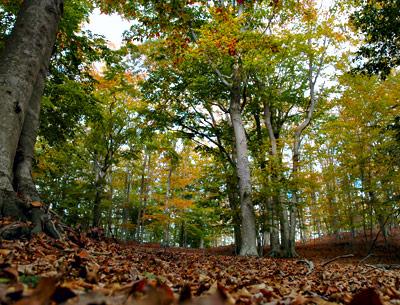Nature Notes: Peak Performance

On Sunday the South Fork Natural History Society hosted memorial service for the late Christopher Roberts, who passed away in August. Chris was a long-standing naturalist, musician, D.J., TV show producer, and landscaper who also worked for me in the East Hampton Town Natural Resources Department on and off. There was nothing environmental that he couldn’t master in a short time, be it wetland mapping, plant and animal identification, nature preserve caretaking, oil spill cleanup, or what have you. He was especially adept at identifying bird species by their appearance, color, flight characteristics, and vocalizations. He headed up the 2004 East Hampton Town breeding bird census, the second such comprehensive survey since 1994. Chris was an eco-friendly guy and a long-term participant in SoFo’s many programs.
Among the attendees were his two sons, McCartney and Ben, both of whom appear to be following their father’s ecological bent. During the ceremony, part inside, part outside, one of the other attendees, the 2-year old granddaughter of Phil and Mary Miller, East Hampton residents and friends of the family, was entertaining some of us with a large pretty-colored oak leaf that she had picked up on site and was proudly brandishing, a perfect symbol for the day’s event.
It made me think of the time when I was 8 and lived in Mattituck across the bay and would spend entire fall afternoons trying to catch oak leaves as they fell from 40 or 50 feet up and twisted and turned in the breeze on the way to earth, one of which so caught my eye that I named it Freddy and took it home with me. It was a floral pet of sorts and it laid by my pillow night after night during the remainder of the fall until it disintegrated into a hundred bits.
I was also reminded of the Saturday before, when I toured East Hampton from the Southampton town line to Napeague checking out and rating the color of foliage using a scale from 1 to 10 that I had developed over the decades since the 1980s. The colors were a moment short of peaking, but even so, almost all of the roadside trees rated 8 and above. It was almost a perfect fall for such a survey and I didn’t want to wait another day as I was reminded that that Storm Sandy had wiped away last fall’s colors a few days before they were about to peak, ending my survey before it began.
East Hampton has preserved more land as permanent native habitat than any other Long Island municipality. Almost all of its back roads are wooded and the trees come in many different shapes, heights, and kinds. Northwest is dominated by white pines, pitch pines, oaks, hickories; Wainscott by pitch pines and scrub oaks; Amagansett by beech, oaks, sweet birch, and a host of others. It turns out that while the foliage along Swamp Road, Old Northwest Road, Red Dirt Road, and Accabonac Highway rated as high as 8.5 on my scale, the Old Stone Highway foliage between was the most colorful, reaching a mark of 9 at many points.
All the while, during the hour-and-a-half-long survey, the leaves were falling at a rate that would leave several of the trees bare by the following day. I was rating and counting them in the nick of time. In 95 minutes of driving, covering 37 miles of back roads, I tallied 476 falling leaves, at which rate some 7,200 would be gone from their perches by Sunday morning. The road with the most falling leaves turned out to be Stony Hill Road, slightly over a mile long, dirt surfaced and badly rutted halfway along, and flanked on both sides by beeches, oaks, hickories, and very few houses. In that short distance, I counted 53 leaves falling while driving from north to south. The winds along Stony Hill Road barely reached above 10 knots and so it would appear that those 53 falling leaves were more than ready to leave their twigs.
Listening as my vehicle passed over and cracked open acorns and hickory nuts, I also carried on a different sort of survey on my journey. I must have cracked thousands of them from beginning to end. Thus, as autumns go, based on foliage aesthetics and nut production, this is one of the best. You can bet that the squirrels, several of which were active on the shoulders as I passed, and turkeys will take advantage of such a bumper crop. It’s a pity that squirrels don’t see colors, but turkeys certainly do. I wonder if they enjoyed the foliage as much as I. There is a lesson here, I suppose, seen from the squirrel’s point of view: Aesthetics are nice and certainly of major importance, but food comes first!
